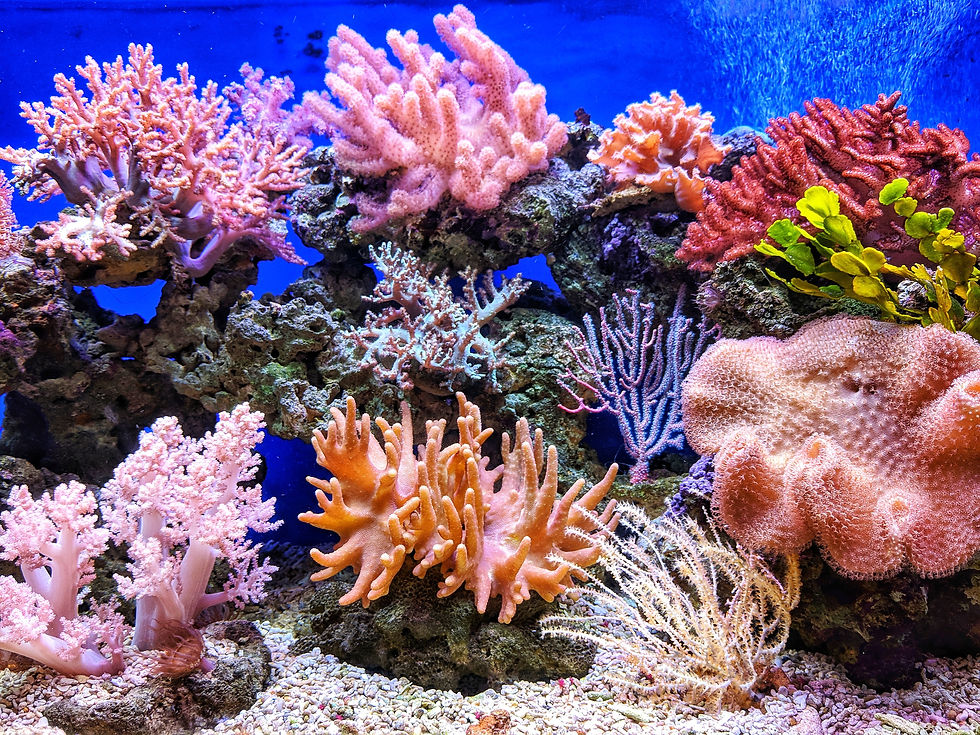Under the Sea
- Megan Eccles

- Jun 14, 2021
- 3 min read
Updated: Aug 13, 2021
I know I’m not the only one guilty of buying a new wardrobe every season, especially with lockdown and plenty of time to scroll through copious amounts of websites. However, what effect does this fast fashion lifestyle have on our oceans?
Well, a majority of the fibres used to create these fast fashion pieces are collected from the Earth. In order to keep up with the high demand, the harvesting process is done by using toxic chemicals, which then run into our water supplies or into our soils.
Around 17-20% of industrial water pollution comes from the fashion industry, which is the highest of them all.
Some companies have decided to make a change and work with The Fashion Pact. They’re a collection of fashion and textile companies who are committed to three environmental goals, including stopping global warming, restoring biodiversity and protecting the oceans. Brands such as adidas, Chanel, H&M, Ralph Lauren and hundreds more have joined up.
What are micro-plastics?
Oceans can be seen to be polluted by heaps upon heaps of plastics, but there is a hidden killer of the oceans – microfibres. Microfibres are tiny threads that are shed when clothes are made or washed. These tiny threads enter our water supplies and flood into the oceans. It is said that every load of washing can shed up to 700,000 fibres.
These fibres are finer than human hair and have now been found in our food supplies. So, thinking about the whole food cycle, many of us end up eating our own microfibres through the fish we eat. Since the fibres are so small, filters can’t catch them all so more and more are still ending up in our oceans and rivers. Fabrics such as polyester are the biggest culprit with its synthetic nature, as well as nylon.
Fashion brands trying to save our oceans
Reformation
This brand’s main ethos is based around being more sustainable and performing ethically. One of their collections was created using Econyl, a regenerated nylon fibre. The fibre is made by repurposing fishing nets found in the ocean and other waste materials from landfills. It sheds fewer microfibres than other synthetic materials.
Stella McCartney
Stella is further experimenting with the fabric Econyl, constructed from ocean waste. This fabric was used in some of her sportswear lines and to form backpacks. She has also worked with Parley for the Ocean to help reduce plastic pollution in the ocean.
Paper London
This brand strives to be sustainable, with one of their new collections being made from recycled fishing nets. This collection also protects against sun rays with UV protection of an SPF50 sun cream.
Bureo
Another brand using discarded fishing nets collected from the ocean is Bureo. They partner with brands such as Patagonia and Costa. With their partnership with Costa, they used the nets to create a sunglasses range.
How you can save our oceans
With World Ocean Day on June 8th, here is a list of things you can do to give back to the environment and join in on the fun:
Become eco-friendly
When buying new pieces, try and look for what the item is made out of. Start by checking if the product is made out of recycled materials, or is made by using natural dyes. Research into the brand as a whole, for example seeing if they manufacture locally or have a clean supply chain.
Capsule wardrobe
Try to invest in more high quality items that will not only be versatile but will have longevity. Sometimes buying cheaply can mean buying twice, so maybe try and splurge on some long-lasting pieces.
Shop direct
When buying new products try to shop directly at the clothing stores, as this avoids unnecessary plastics with shipping items. Also remember to bring a reusable bag to avoid buying plastics bags.
Invest in a sewing kit
Buying a needle and thread will be your saving grace when it comes to reducing throwing out clothing. Even if it is a small hole or lost a button or two, each is fixable. A quick repair will allow you to reduce your throw-away mindset.
From 2015 to 2050, it’s predicated that over 22 million tonnes of microfibres will have entered our oceans. This amount could be catastrophic to our eco-systems, so the earlier we make a change the better.



Comments